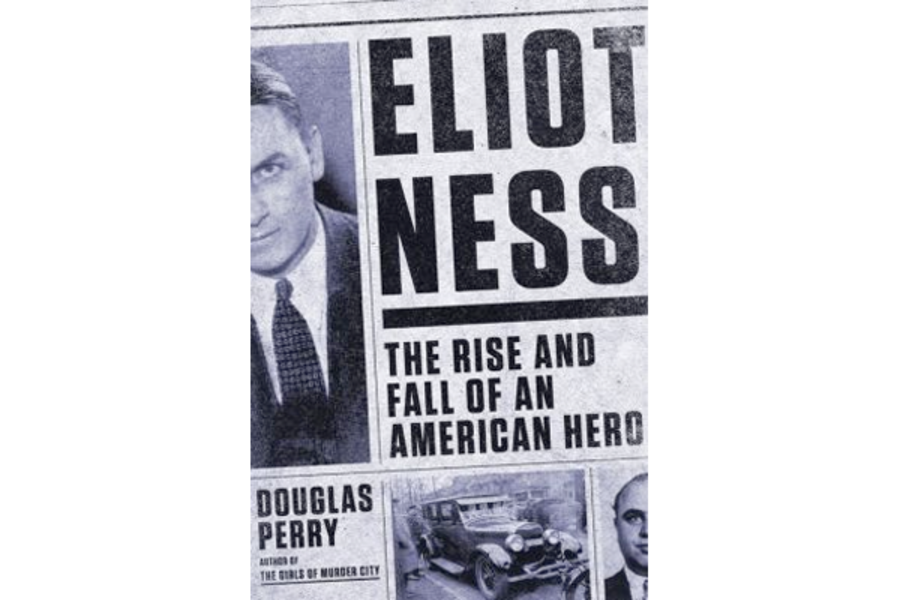Eliot Ness: The Rise and Fall of an American Hero
Loading...
Eliot Ness, the quintessential G-man, wasn't really a G-man. Never did he carry an FBI badge. (J. Edgar Hoover didn't want another star hogging the spotlight.) Nor was he the guy who brought down Al Capone. As for "The Untouchables," the agents so named because of their supposed incorruptibility, well... some of them could be bought after all.
There are so many myths around Ness that it's no wonder history buffs tend to write him off as a legend in his own mind and the fevered imaginations of biographers and Hollywood. But the truth, as a couple fictional FBI agents from the 1990s might say, is out there. And while it's hardly stranger than fiction, the true story of Eliot Ness – savvy lawman, crime-fighting pioneer, troubled soul – makes for a lively, inspiring and startling read.
The credit goes to author Douglas Perry, who's quickly become the preeminent historian of true crime in the Second City. His previous book, 2010's "The Girls of Murder City," is a vivid spin through the bloody era that inspired the musical and movie "Chicago." Now he's returned with Eliot Ness: The Rise and Fall of an American Hero.
Ness isn't an easy historical figure to profile. Sure, he was young, handsome and charming in his heyday. (Ryan Gosling, call your agent!) But he was a man of action more than introspection, and his life was cut short before he reached his mid-50s.
Fortunately for Perry, Ness lived much of his life in public. Reporters adored him, at least until his demons pulled him back into obscurity, and they had reason to be fans: Ness was really something.
The most amazing part of Ness's story, and the one that hardly anyone seems to know about today, is his tenure as director of public safety in Cleveland. The nation's sixth-largest city, a hotbed of crime and home to one of the most corrupt municipal governments in all the land, hired a 33-year-old Ness to take over and shake up the joint.
He did just that, embracing newfangled ideas about policing in spite of opposition from crooked politicians, crooked cops and, well, crooks. Training, forensic science, neighborhood policing, statistics – he helped pioneer or advance all of it.
He dismissed the naysayers, crooked or not. "There are folks who start out: 'This guy Ness is crazy,'" he said of fellow cop brass. "That's part of the job."
Also part of the job: Results. Ness got them with the help of a mundane-sounding safety campaign, outreach to youth gangs, and even new basketball courts to keep kids busy (shades of President Clinton's initiatives decades later). He also created a crack undercover squad that aimed at ridding the police department of mobbed-up officers in a town where cops and robbers worked together instead of shooting each other.
Before Cleveland, Ness was a little shot-turned-big shot in Chicago, home of bootleggers galore and machine guns that stole the lives of the guilty, the innocent and those in between. And, of course, hoods like Al Capone who became public faces in fancy suits – "men of ambition," as Perry puts it.
Just as he would be a few years later in Cleveland, the Chicago-era Ness had the benefit of a knife-sharp mind that allowed him to capitalize on moments of good fortune. Instead of taking on the entire Capone operation with its tentacles in gambling, prostitution and extortion, he focused on the producers of the illegal alcohol. Expert work by Ness and team uncovered breweries that were hidden through remarkable feats of engineering, and his creativity kept the advantage on the side of the police.
Perry takes plenty of detours beyond Ness's work history, exploring fascinating topics like an infamous Cleveland serial killer case, the evolution of law enforcement tactics, and the ever-present enticements wooing less-than-holy Chicago-area cops. But he doesn't need to wander afield when it comes to the dangerous missions by the "Untouchables" squad in Chicago: The action scenes are positively cinematic.
Perry has less success as he tries to psychoanalyze Ness, whether through dipping into his motivations on the job ("he might be bashful, but he wanted to win") or by weaving novelistic vignettes about his troubled relationships with women ("those blue eyes told everything. They told you he was cerebral and sensitive and maybe a little troubled down deep in his soul").
Those are quibbles. In the big picture, "Eliot Ness" is fast-paced and full of detail that's well-researched but not overbearing. Smart, authoritative, and bristling with challenges to the status quo: It has more than a little in common with its remarkable subject.








